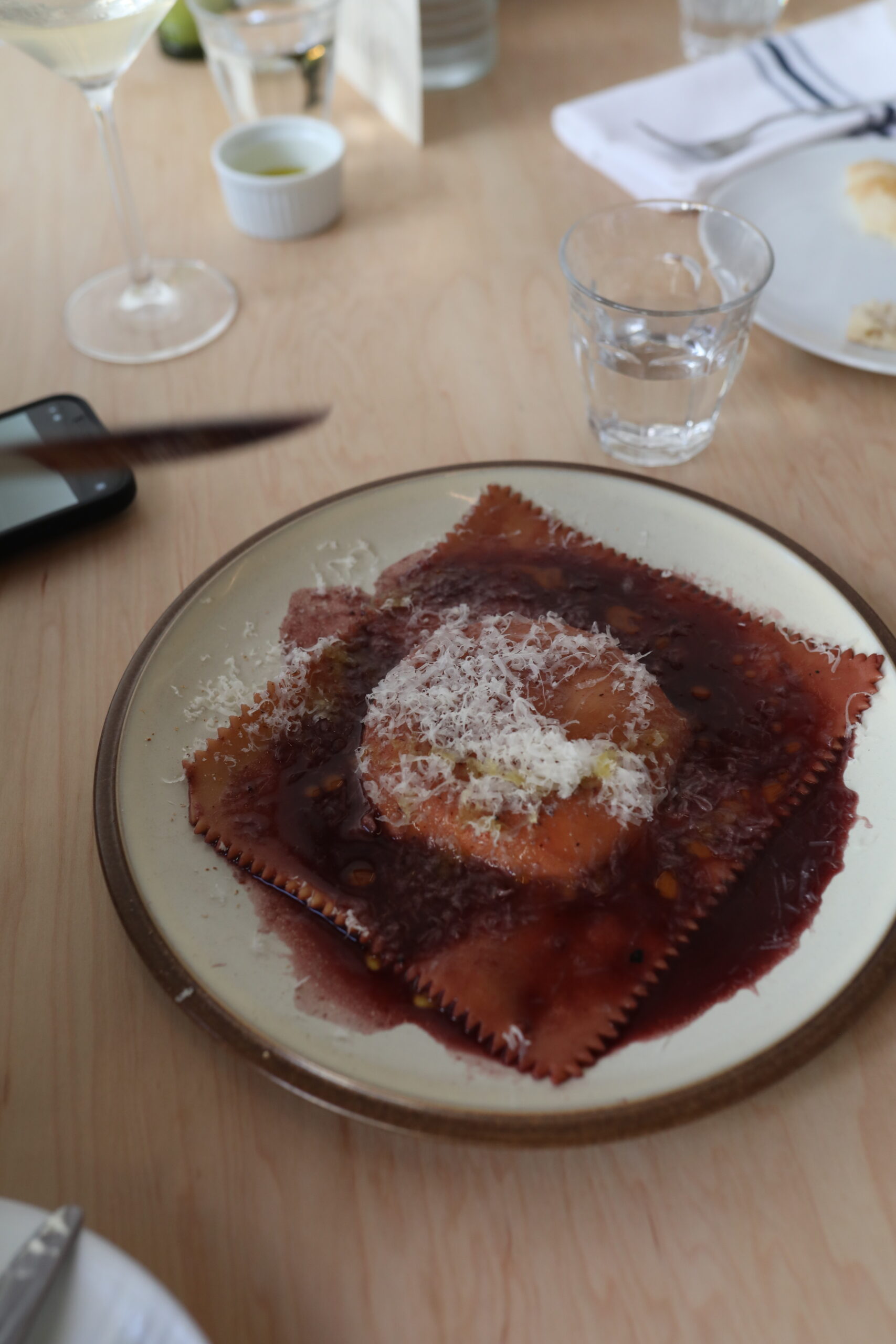D.O.P: Where Instagram-Worthy Raviolo Is on Hallowed Ground
Italy’s best-known important regulatory authority, the Denominazione di Origine Protetta (DOP), ensures Italian foodstuffs, primarily those of national and cultural importance, are produced in and faithful to their native regions and customs. Only producers that respect the tenets of the culinary lineage are allowed to make food bearing the name of the region. Calgary’s newest hotspot, D.O.P, in the former home of Bar Von Der Fels, seems to have respected the codes and customs of its namesake authority. The traditional fare of its downtown 1 Street SW address is distinguishable by its adherence to the to the exhilarating admixture of rusticity and gastronomic boldness.
Unlike cities with longer histories, a fine-dining experience in Calgary is elevated more by an older setting than a modern one. Simply by occupying one of the city’s comparatively few prewar buildings, D.O.P heightens its appeal. While the 26-seat room in one half of a circa 1920 building block still bears some BVDF signatures—including a sardonic “no malbec” warning on the front door—the new whitewash paint job in tandem with the substantially less cluttered bar area sets D.O.P up as more Adriatic than Amsterdam. While the less-is-more mantra led to only minor design modifications in the transition from BVDF to D.O.P, the menu has changed radically, going from elevated pan-European bar food to Nonna’s ode to the old country.

Most of the antipasti comes from recipe book of the owner, Tony Migliarese’s, Nonna. Like all the best Mediterranean starters, Nonna’s Canadianized version of antipasti is an ideal palate pick-me-up. Most dishes are high acid, low density, and ideal over a piece of the almost pita-like grilled bread. The white anchovies, doused in olive oil and garnished with pickled onions, are disarmingly buoyant, almost to the point of effervescence. And the nduja spread, a classic Calabrian chili-infused spreadable sausage, introduces a combination of acidity and spice usually seen in more equatorial cuisines, while texturally it veers more toward a fine mousse than the cream-cheese consistency less thoughtful chefs are wont to serve. But the undoubted star of the antipasti show is the pickled green tomatoes; the scaffolded sensory experiment is a tomato with the snap of an apple bathed in a starkly unherbaceous pickling liquid.

D.O.P’s most popular primi and secondi dishes are marked by their bacchanalian enormity. As he offers to slice open our serving of raviolo, filled with egg yolk and ricotta, and topped red wine butter sauce, Migliarese admits, “These dishes are perfect for Instagram.” Eating a raviolo (singular of ravioli) so big it has to be served like a pizza is novelty enough, but the supple, Japanese-seeming integration of egg yolk into a savoury dinner dish already awash in a host of competing umami flavours renders the experience sublime. On the other hand, the veal chop Parm and veal chop Milanese are cuts of meat of Flintstone proportions. Whereas the raviolo required a dinner plate, the veal dishes arrive aboard full-sized serving platters. We tasted the Milanese, and it was abundantly clear the size of the dish was not merely for show. The texture of the meat allows for divergent flavours to congregate in certain areas; where one bite from a concave portion is awash with brown butter and sage, another is more to the point, relying on the textural integrity of the veal to anchor it.

And to wash it all down? The wine list is 100 per cent Italian and contains many old-school favourites, such as Marchesi Antinori Tignanello, as well as a smattering of trendy, often natural offerings, like Paltrinieri Radice Lambrusco di Sorbara. Migliarese curates the list, he notes after our meal, to enliven the mood in the restaurant. Large-format bottles make up a good part of the collection because “they are fun to serve to larger groups.” Just keep in mind that D.O.P, unlike its predecessor, is not a wine bar. If it were? Well, then its namesake would be the Denominazione di Origine Controllata, otherwise known as the DOC.




